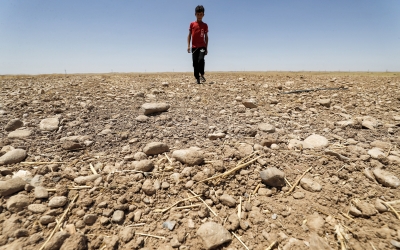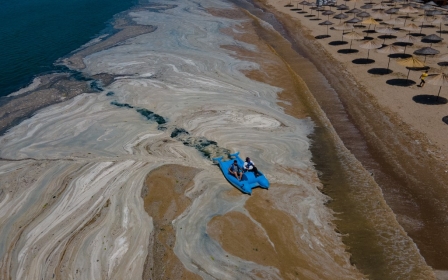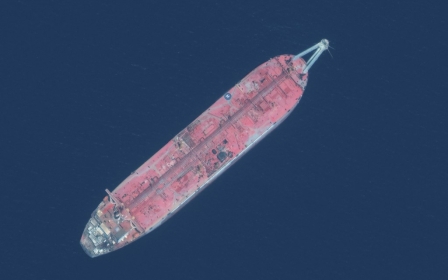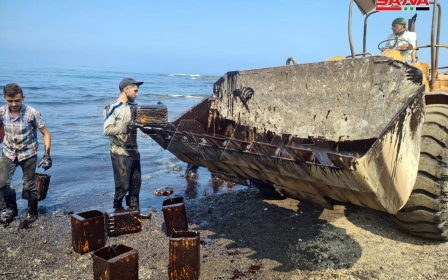Syria war turned coast into 'pollution flashpoint': Report
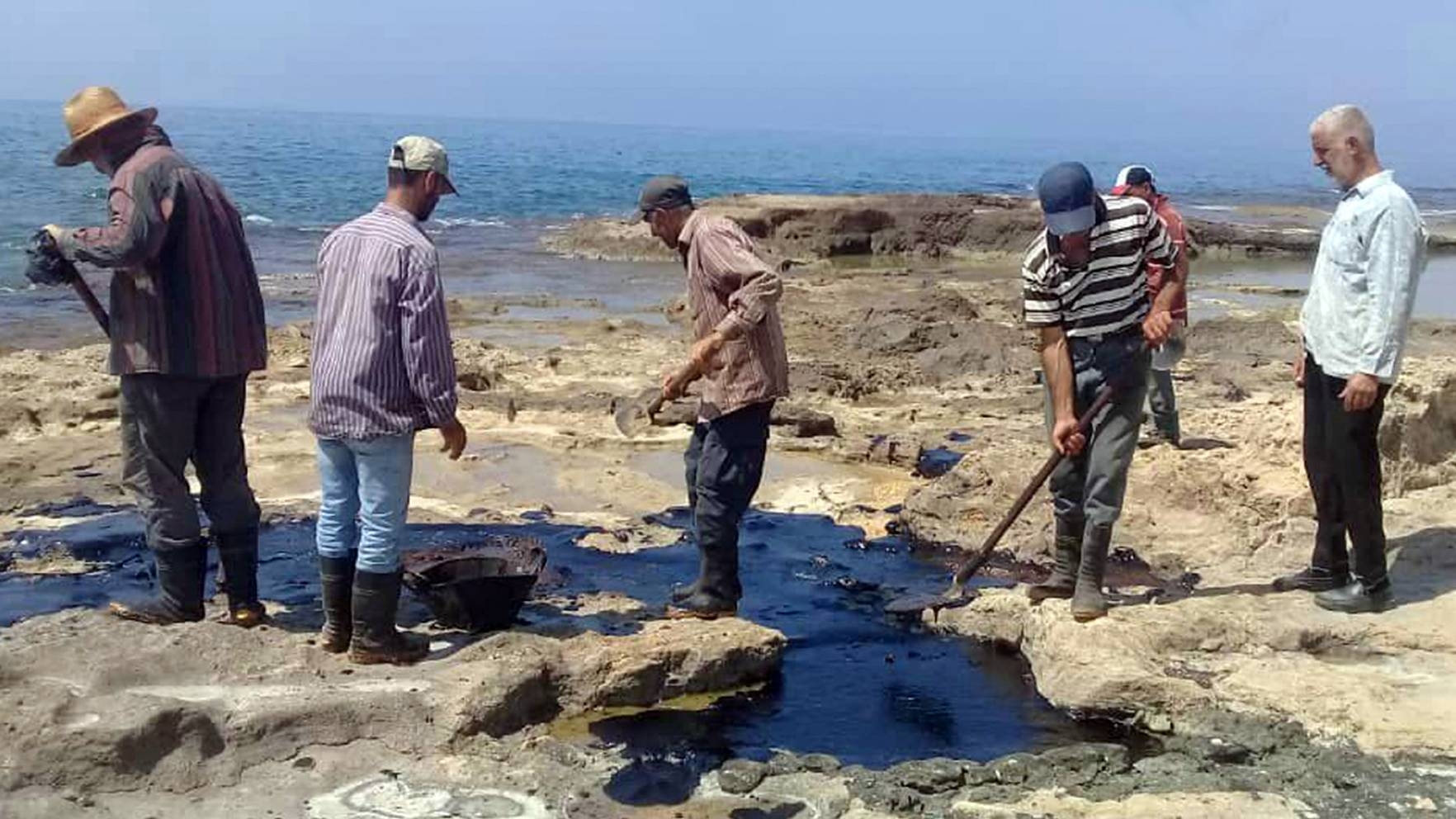
Leaks from moored tankers, underwater pipelines and wastewater systems have turned the Syrian coast into a major "conflict-linked pollution flashpoint", said a report released on Tuesday.
The study by PAX, a Dutch peace-building organisation, analysed public and commercial satellite imagery to assess the damage caused to the waters off the port of Baniyas, where an oil spill in August leaked thousands of tonnes of oil into the Mediterranean Sea.
New MEE newsletter: Jerusalem Dispatch
Sign up to get the latest insights and analysis on Israel-Palestine, alongside Turkey Unpacked and other MEE newsletters
The report listed "direct attacks on and degradation of energy infrastructure, lack of maintenance, and failing environmental governance" as the main sources of pollution stemming from the country's coast.
Baniyas is home to Syria's Company for Oil Transport, which operates a large fleet of oil storage tankers. Its refinery is connected to underwater oil pipelines linked to visiting oil tankers.
It is also home to a large thermal power plant that generates electricity using heavy fuel oil and is located on the shore.
Much of the Mediterranean has already been suffering from pollution. However, a decade of conflict in Syria has turned its coast into a major environmental concern, PAX's report found.
The leaks and wastewater discharges caused by the Syrian conflict are damaging the future of a country where the war has already killed half a million people and displaced around half of the population.
"Syria's coastal areas are an important source of livelihoods for fisheries and tourism while also hosting many unique yet fragile marine ecosystems," the report said.
Devastating oil spill
The remote sensing carried out by PAX picked up an increase in spills between 2019 and 2021, culminating with a large spill in August this year that reached waters off Cyprus and Turkey.
On 23 August, a tanker containing roughly 12,000 cubic metres of fuel at Syria's depleted Baniyas thermal power plant on the government-held west coast began to leak.
The World Wide Fund for Nature (WWF) warned in September that the spill could have "potentially devastating consequences for marine biodiversity and ecosystems" and the effects of the spill will be felt for more than a decade.
"The minimum is 15 years, and then you go upwards from there," Mauro Randone, coordinator of the Sustainable Blue Economy Programme at the WWF Mediterranean Marine Initiative, previously told MEE.
The report noted that beaches, barrier reefs and dunes of Latakia, further north on the Syrian coast, were significantly affected as a result of the spillage that emanated from a thermal plant storage tanker.
Wim Zwijnenburg, co-author of the report, warned the risk of a repeat scenario - or worse - was high.
"These concerns remain after the August 23 oil spill, as no resources are allocated to repair and restore outdated and crumbling energy and water infrastructure," he told AFP.
"The Syrian regime refrains from enforcing environmental regulations, while threats from sabotage against Iranian oil tankers delivering oil remain."
'Acute health risks'
In addition to Syria's coastline, the PAX report found that pollution in the country is also affecting the rest of a nation currently experiencing severe drought, with oil spills impacting water sources as well as agricultural lands in the east.
According to the United Nations, Syria is currently facing the worst drought in 70 years, and aid groups warned in August that two dams in northern Syria - which provide three million people with electricity - are at risk of imminent closure as a result of the water crisis.
Meanwhile, the areas of Hasakah, Aleppo, Raqqa, and Deir Ezzor have all seen an increase in the spread of water-borne diseases.
"The whole of Syria's environment is severely suffering due to the conflict," the study said.
"Not only can this pose acute health risks for civilians from exposure to toxic remnants of war, but also damage to natural resources impacts livelihoods and biodiversity, including effects which are additionally compounded by the impacts of climate-linked droughts and heatwaves.
"Rainfall shortages in the entire region pose serious risks to the future of agriculture and access to drinking water and electricity, which is often worsened by deliberate shutdowns of water flows in rivers and pumping stations."
Middle East Eye delivers independent and unrivalled coverage and analysis of the Middle East, North Africa and beyond. To learn more about republishing this content and the associated fees, please fill out this form. More about MEE can be found here.



